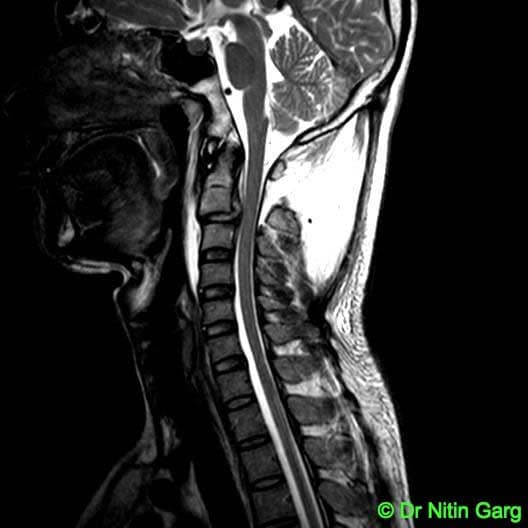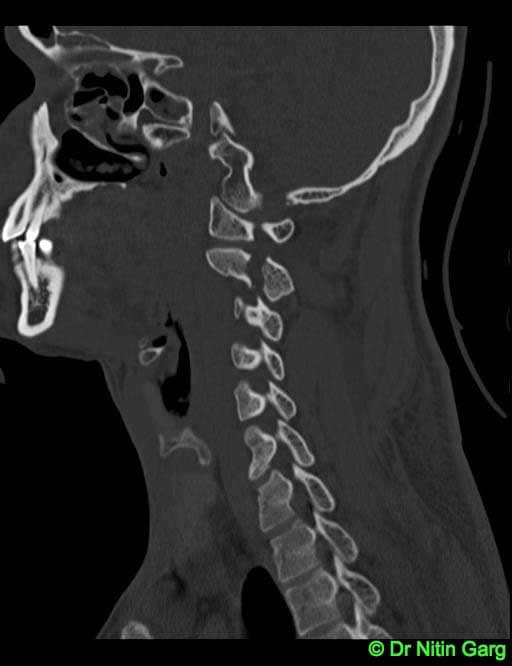Hangman’s fracture, traumatic spondylolisthesis of C2 vertebrae, is not an uncommon fracture involving the upper cervical spine. Tis an unstable fracture requiring surgical fixation to avoid spinal cord injury.
A 20 year old patient was admitted with C2 Hangman’s fracture. His MRI (Figure 1) and CT scan (Figure 2) showed significant injury to the disc with some malalignment and defect in bilateral pars. The patient had no neurological deficits.
He underwent anterior approach, discectomy and fusion using iliac crest graft and fixation using titanium plate and screws. Approach to C2-3 disc space requires slight modification of the standard anterior approach. It requires mobilisation of the hypoglossal nerve to avoid injury to the nerve. Discectomy and fusion are standard as anterior discectomy (Figure 3)
Anterior approaches offer benefit to not restricting rotation movement of the cervical spine. In dorsal approaches, C1-C3 fixation is done thereby resulting in a significant loss of rotational movements of the neck.
Aids used: Microscope, C-arm, Neurosurgical drill



